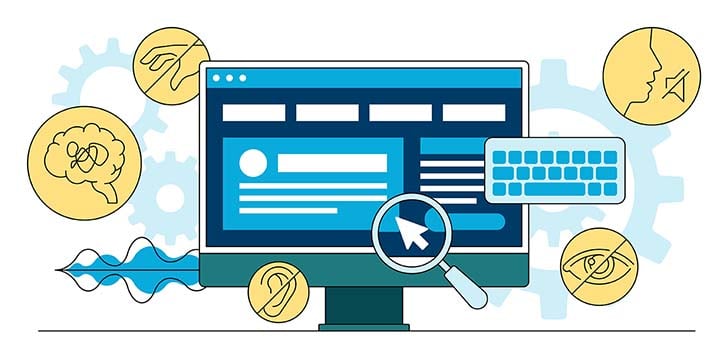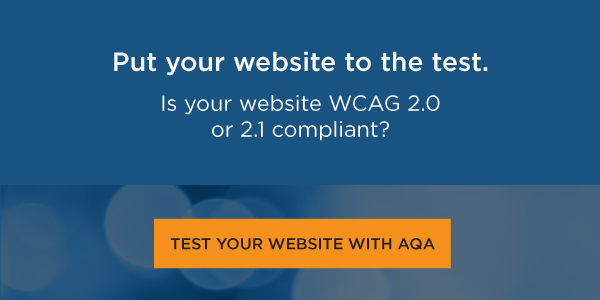Originally written on Feb 12, 2019. Content was updated in September 2023.
Your journey towards improved digital accessibility will present many opportunities and challenges. Whether you are learning about accessibility or are ready to get started, there will be many details to track and initiatives to complete, all the while keeping your eyes on the big picture.
Below is a brief version of our full Web Accessibility Roadmap that can be downloaded here.
Step 1: Strategize and Organize
Before you begin, gather your team and be prepared to answer these questions:
- Why is accessibility important to the company?
- What are your compliance standards?
- Where are these improvements needed?
- Website, mobile, internal processes, client systems
- How will you implement these changes? What is your timeline?
- How can you ensure accessibility remains a priority within the organization? Do you need to hire new staff and/or adjust expectations for current staff?
Once your strategy is set, it’s time to communicate it.
- Win internal support for your initiative from the CEO to the newest administrative assistant. Expand the message out to any external stakeholders who are champions of your company’s success.
- Sit down with any third-party developers and emphasize the importance of adherence to your digital accessibility protocol.
Step 2: Test and Audit
Start with a basic question—how accessible are you right now?
- Take advantage of our Free UsableNet AQA Community Version to evaluate your WCAG conformance. This will give you a sense of the task ahead.
- Test how your native apps perform with Apple VoiceOver, Android’s Accessibility Developer Checklist, or Android's Accessibility Scanner app.
Let the professionals help your company take the next step.
- Automated testing is only the first step. Bring on an accessibility expert for a comprehensive audit of your site’s functionality and content.
- Make sure the scope of the audit encompasses your entire digital footprint, including desktop, mobile, tablet, social, and any other part of your online landscape.
- Promote transparency with a detailed compliance report that lays out any and all accessibility concerns to your internal and external audiences.
Step 3: Remediate, Repair, and Verify
Now that you have your comprehensive list of fixes, it’s time to dig in and move your company toward WCAG 2.0 AA conformance.
Consider the following remediation options:
- Fix the issues in house with the help of an Accessibility testing Platform such as AQA
- Fast-track your compliance using a Dynamic remediation solution such as Assistive
Check your work:
- Bring in real-world users of assistive technology. Their input is crucial to this process.
- Have your QA team verify and create documentation to use internally and externally.
Step 4: Train, Maintain, and Retain
Every member of your staff—new and old—should be trained on the maintenance and value of your site's new level of accessibility.
- QA: Incorporate testing into the development lifecycle and set standards that will continuously validate WCAG 2.0 AA guidelines.
- UX: Develop the skill set for interactive interface design.
- Marketing and Management: Help your staff become fluent in digital accessibility regulations, guidelines, and challenges.
Establish a process that will ensure ongoing compliance.
- Set a schedule for regular tests (automated and user-based) and re-audits.
- Install reporting mechanisms that pair compliance reports with ongoing accessibility evaluations.
- Assign future accessibility initiatives to an individual or department whose role is to stay current on the accessibility landscape.
An effective accessibility strategy provides benefits to your customers and the company, and brings the digital world one step closer to being accessible for people of all abilities.
Get started now with UsableNet as an integral strategic partner for digital accessibility and usability. Contact us to learn more about our range of digital accessibility services, our accessibility management platform, and our Dynamic Remediation Solution.








